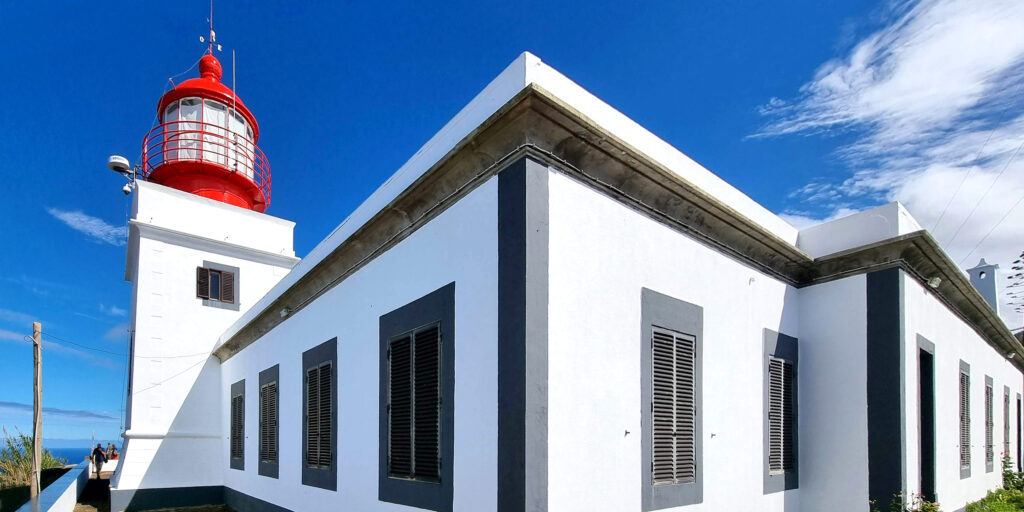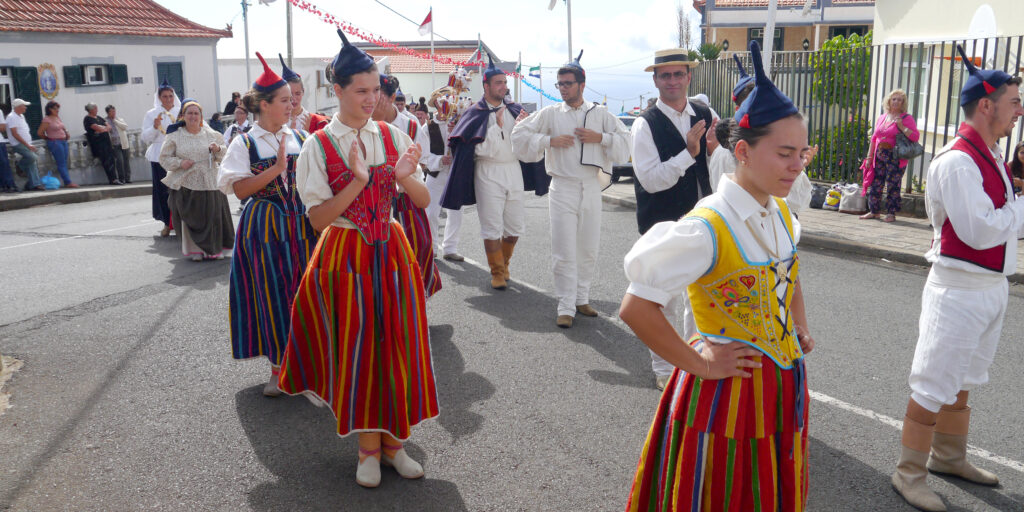
Ponta do Pargo – Discover the West
Vibrant Charm of the Past
As the westernmost point of Madeira, Ponta do Pargo lies approximately 350 meters above sea level on a flat coastal plateau. Ponta do Pargo has preserved its tranquil and authentic charm to this day. The town’s most striking landmark is the lighthouse at the tip of the cliff; standing about 290 meters above sea level, it is one of the highest in Portugal. The tower itself is 14 meters high, and its light has a range of approximately 80 miles.
Historical Background
The settlement of Ponta do Pargo began in the 16th century with Garcia da Câmara, the son-in-law of João Gonçalves Zarco, one of Madeira’s discoverers. The town’s name derives from a remarkably large fish caught by the early explorers, resembling a snapper, known as „pargo“ in Portuguese. This event led to the naming of the headland as „Ponta do Pargo.“
Ponta do Pargo Lighthouse
The coastline of Ponta do Pargo was extremely dangerous for maritime navigation. As a result, a lighthouse was built on the Ponta da Vigia cliff and inaugurated on June 5, 1922. This westernmost point of Madeira offers a panoramic view over the Atlantic Ocean and the surrounding rock formations.

From here, you can witness legendary sunsets and later enjoy the lighthouse’s beacon lighting up the night—an unforgettable spectacle! Today, this still-active facility is classified as a cultural heritage site of local importance by the regional government.
On the ground floor of the lighthouse, a small museum was established, opening its doors in 2001. Here, you can explore the theme of „lighthouses“ through documentation and photographs. You can also learn about the locations of other lighthouses on Madeira.
Traditional Economy and Way of Life
Agriculture
Traditionally, agriculture has shaped life in Ponta do Pargo. The inhabitants cultivated various crops such as sweet potatoes, carrots, wheat, grapes, and apples. Livestock farming, especially dairy production, also played a significant role in supporting local butter production.
Wheat was the most important product, ensuring the community’s sustenance. Farmers worked from morning to evening in the fields, often eating their meals there. This created the need for containers to transport water and food.
Basket Production
To meet the demand for transport containers, people began making baskets from wheat straw. The straw was rolled in a circular shape, tightly packed, and bound with cords. Depending on the family size and intended use, these baskets came in different shapes and sizes. For example, corn porridge was pre-cooked and kept warm until lunchtime, when it was shared in the fields—often accompanied by wine. These baskets were also used to transport water to the farms and to carry bread and codfish during pilgrimages to Loreto, Ponta Delgada, and Monte.
Apple Festival
The „Festa do Pêro“ takes place annually in September. Farmers from Ponta do Pargo and surrounding communities celebrate their successful apple harvest. The village even has its own apple variety, the „Pero da Ponta do Pargo,“ one of the main types grown on Madeira.
The festival is popular among both tourists and locals, who come together to enjoy apple cider and various sweet treats. Exhibitions provide insights into apple cultivation and harvesting, while market stalls complete the experience.
The highlight of the festival is a joyful parade through the village, accompanied by music. Every resident of the community actively participates in the celebration.

Conclusion
Ponta do Pargo is a place where traditions are preserved and lived. The construction of a new highway in 2022 significantly reduced travel time to Madeira’s western region, connecting the village to „modern life.“ With the establishment of a new golf course, a tourism highlight has been introduced, boosting the economic development of this rural area. However, the impact on the local population remains to be seen…
Ponta do Pargo is accessible from Funchal by bus. Board line 142 of SIGA Rodoeste at Avenida do Mar and enjoy a scenic ride straight to the heart of the village.
Looking for more stress-free adventures on Madeira?
“Madeira by Bus” is your ultimate travel companion, featuring detailed bus schedules, insider tips, and must-visit destinations across the island. Whether you’re a first-time visitor or a seasoned explorer, this guide makes it easy to plan your journey.
👉 Get your copy today at www.madeira-by-bus.com/read and start exploring Madeira the eco-friendly way!


